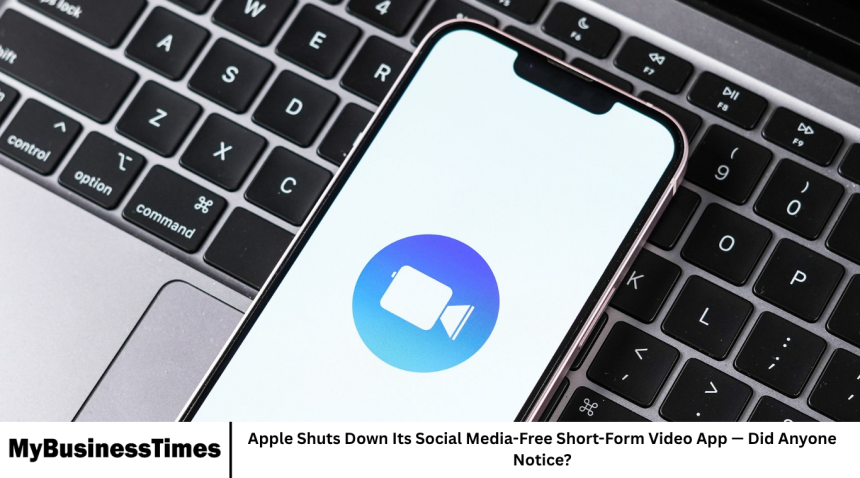Apple has quietly shut down its short-form video app that allowed users to create and share content without the involvement of social media. The app, which aimed to provide a distraction-free and private video experience, was introduced to appeal to users looking for creative outlets without the pressures of social networking. Despite its unique concept, the closure came with little fanfare, leaving many users and tech observers surprised.
The shutdown highlights the challenges tech companies face when launching niche apps in a highly competitive market dominated by platforms like TikTok, Instagram, and YouTube Shorts. Users who enjoyed the social-media-free environment now have to look for alternatives, while Apple refocuses its efforts on other projects and services.
Background of the App
Apple’s short-form video app was introduced as an experiment to offer a different approach to content creation. Unlike traditional social media platforms, it allowed users to upload videos without sharing them publicly or relying on likes and followers. The focus was on creativity and personal enjoyment rather than social validation.
The app was part of Apple’s broader strategy to diversify its services beyond hardware, aiming to engage users with innovative software solutions. While the idea was well-received by some niche communities, it struggled to gain widespread popularity among mainstream audiences.
Reasons Behind the Shutdown
While Apple has not provided a detailed explanation for the closure, several factors likely contributed. The app faced tough competition from established short-form video platforms that already dominate user attention. Additionally, maintaining the app and ensuring ongoing updates, security, and server costs may have outweighed its benefits given the limited user base.
Another challenge may have been user engagement. Social media thrives on interaction, and the lack of community features might have limited the app’s appeal to a broader audience. As a result, Apple decided to discontinue the app quietly rather than invest further resources.
User Reactions
Users of the app expressed disappointment on social media, highlighting the unique value of a platform without public metrics or social pressure. Many appreciated the freedom to create content solely for personal enjoyment. Others noted that the app filled a gap in the market for digital experiences that focus on creativity without social comparison.
Despite the closure, some users encouraged Apple to consider bringing back similar projects in the future, emphasizing the importance of innovation and experimentation in the tech industry.
Impact on Apple’s Strategy
The shutdown reflects Apple’s approach to experimenting with new services and adjusting its portfolio based on performance and user adoption. Apple regularly tests software projects, some of which succeed and become integral to its ecosystem, while others are discontinued if they fail to meet expectations.
This decision allows Apple to focus on other initiatives with higher engagement and growth potential. It also demonstrates the company’s willingness to explore niche concepts while remaining flexible in responding to market realities.
Alternatives for Users
Users looking for social-media-free video experiences now have several alternatives. Some apps focus on private content sharing or creative video editing without public feeds. Others offer limited sharing with close friends or small communities, balancing creativity with privacy.
While Apple’s app is gone, the demand for distraction-free digital experiences continues. Tech developers are likely to explore similar concepts in the future, as many users seek platforms that prioritize creativity over social comparison.
Frequently Asked Questions
Why did Apple shut down the app?
Apple did not give a detailed explanation, but limited adoption, competition, and resource considerations likely contributed.
Was the app popular?
The app had a niche following but did not achieve widespread popularity compared to major social media platforms.
What made the app unique?
It allowed users to create and share videos without public likes, followers, or social media interaction, focusing purely on creativity.
Are there alternatives to this app?
Yes, several apps offer private or small-group video sharing, and some focus on creative tools without public feeds.
Will Apple release a similar app in the future?
While there’s no official confirmation, Apple continues to experiment with new services and may explore similar concepts in the future.
Conclusion
Apple’s shutdown of its social-media-free short-form video app underscores the challenges of niche apps in a competitive market. Although the app offered a unique creative space, limited adoption and strong competition led to its quiet closure. For users, the shutdown is a reminder of the fast-changing tech landscape, where innovative ideas are tested, refined, and sometimes discontinued. Apple continues to explore new services, but the loss of this app leaves a small community of users looking for alternative ways to enjoy video creation without social pressures.







